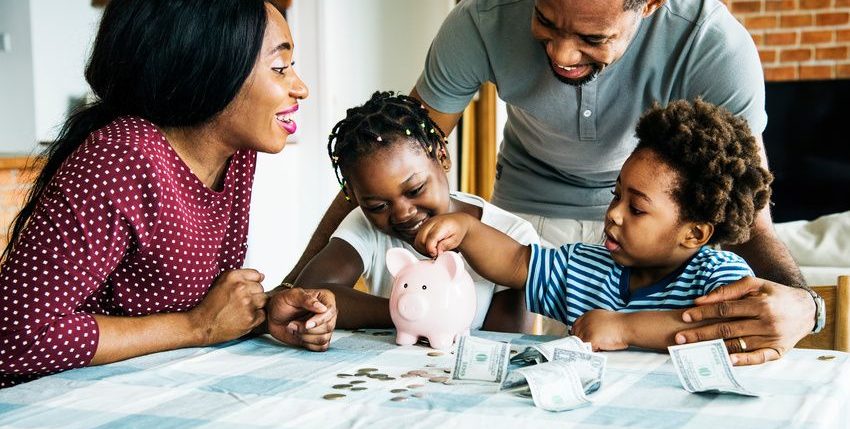
Teaching Children of All Ages About Money
Children learn as they grow – they don’t just jump into adulthood without any preparation. When it comes to money, kids are learning about it when they’re incredibly young, from a toddler who likes to use mommy’s dollar to buy a treat to older elementary school kids who are learning about how to start saving for a toy they really want. Financial literacy is something taught over time, not all at once, and knowing how to teach it can help parents ensure their children know how to handle money before they move out on their own for the first time.
Start Talking About Money Early
It’s never too early to start talking about money. Younger toddlers may not understand, but they can begin to learn how to count and recognize money and help figure out if something is in the budget or if buying it should wait until later. They’re watching and learning at this age, so they’ll pay attention to habits like creating a budget and paying for groceries. They’ll see when mom or dad buys something extra or puts it back and waits to buy it later.
Work on Counting and Exchange
Beginning around preschool age, kids can start counting money and learning about the different types of coins and bills. They can also start learning how to exchange money for what they want. When they’re at the store, let them have a few dollars to pick out something they want. They can then go to the register and pay for it all by themselves. Remind them to wait for change and be polite when buying anything, then talk to them about what they did on the way home. Reinforce how they used the money to make a purchase and got change back to save for next time.
Start Earning Money at Home
By the time kids start elementary school, they can earn money at home. They can start doing chores around the house to earn money. They’ll learn the value of a dollar by working hard to earn it. Elementary school is an excellent time to teach them about saving.
Begin Saving Up for Something Big
Once kids earn their own money, they can learn how to spend it. A big part of this is learning how to save up for something big. When they want a toy that costs more than they have available, they can set a goal and work on earning money to save up and reach that goal. Setting goals shows them how to budget their money for spending now, and saving for later helps teach them that they need to save and how to save.
Teach Opportunity Cost
Toys are a lot of fun to buy, but there’s only so much money to spend. As kids earn and spend their own money, they’ll learn about opportunity cost. If they go ahead and buy that toy now, it’s going to mean they can’t purchase the other one or that it’s going to take longer to save up for the big toy they want. Talking about this gets them to start thinking about how they’ll spend their money and what it might cost them if they buy something on impulse.
Get Involved with Budgeting
Middle school kids can start creating a budget and sticking with it. Though they don’t have much money coming in yet, they’ll be able to create a basic budget for long-term savings, short-term savings, and spending right now. They can sit down whenever they get or spend money and update their budget, which teaches them how to set a budget and stick with it.
Get a Bank Account
Teenagers can get a bank account with their parents, and now’s a good time to learn how they work. Though checks aren’t used much anymore, it’s still important to be able to properly balance the account and keep track of what’s in it. Learning how to use a debit card and knowing the current balance are excellent skills. Open a checking and savings account for them to put money aside and keep their checking account balanced.
Show How to Use Credit Cards Properly
Credit cards are often used to create debt that is difficult to repay but not if used correctly. Teenagers can have a credit card and start learning how to use it to make purchases and then pay it off each month to avoid interest. Having a credit card with a small limit helps them build credit while they’re still young and teaches them how to do it properly to avoid getting into a significant amount of debt.
Try a Test Loan to Understand Interest
With the help of parents, getting a small loan can enable teenagers to purchase something they need and see how the interest works while they repay the loan. A small loan is an excellent introduction to loans because the risk is minimized. They’ll learn why it’s a bad idea to take out student loans to pay for college or have debt that needs to be repaid. Small loans may be a great way to do this, so the borrowed amount is low, but they can see how interest grows over time and impacts how much they repay.
Financial literacy can’t be easily taught in school or one weekend before a child becomes an adult. It’s something they learn throughout their childhood, and habits created when they are young can go a long way toward helping them form good financial habits that will last them well into adulthood. Ready to start teaching your child about money? No matter how old they are, now is the perfect time to start. Use the tips here to start teaching your child about money, so they have the skills to use it wisely as they grow.
Cary Silverman is a consummate entrepreneur having sold multiple companies during his 20 years of business experience in the financial industry, but for him, it isn’t about the money. His success is rooted in his passion to focus on doing something better today than it was done yesterday. These days, he’s the CEO of Waldo General, Inc. that oversees the operation of King of Kash.

